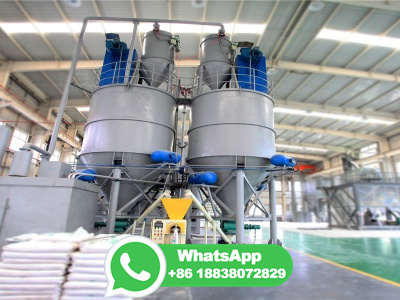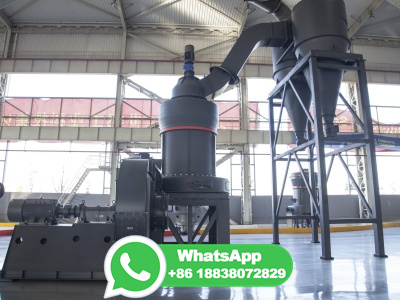
Coalification is a chemical process in which hydrogen and oxygen are lost from the original peat fool, increasing the ratio of carbon to other elements. This involves alteration to the remaining molecules of the material, in particular the conversion of lignin to vitrinite. Coalification is not an allornothing process: rather it produces coal ...
WhatsApp: +86 18037808511
Peat is the "forgotten fossil fuel." While oil, coal, and natural gas are exported around the world, few outside northern Europe are aware of this energy source. In certain circumstances, peat can be an early stage in coal formation. Most of the time, however, peat is a unique material. Peat forms in bogs.
WhatsApp: +86 18037808511
Processes that turn peat into coal. Peatification and coalification are processes that turn peat into coal. Expert answered|marie2061|Points 328| Log in for more information. Question. Asked 3/8/2020 3:17:58 AM. Updated 265 days ago|2/20/2023 9:01:10 AM. 0 Answers/Comments.
WhatsApp: +86 18037808511
As nouns the difference between peat and coal is that peat is soil formed of dead but not fully decayed plants found in bog areas while coal is a black rock formed from prehistoric plant remains, composed largely of carbon and burned as a fuel. As a verb coal is to take on a supply of coal (usually of steam ships).
WhatsApp: +86 18037808511
All coals, regardless of whether they are caking or coking coals, leave a solid carbonaceous residue at the end of the carbonization process. Chars, if heattreated to extreme temperatures, ≥2500 °C, do not form graphite, while cokes do. That is, chars are nongraphitizable, while cokes are graphitizable [A]. Type.
WhatsApp: +86 18037808511
The process that caused peat to become coal is called coalification. It involves the conversion of plant material, such as peat, into coal through a series of geological and chemical changes over millions of years. The process begins with the accumulation of plant material in a wet, oxygenpoor environment, such as swamps or marshes.
WhatsApp: +86 18037808511
Lignite (derived from Latin lignum meaning 'wood') often referred to as brown coal, is a soft, brown, combustible, sedimentary rock formed from naturally compressed has a carbon content around 2535%, and is considered the lowest rank of coal due to its relatively low heat removed from the ground, it contains a very high amount of moisture which partially explains its ...
WhatsApp: +86 18037808511
Coal Rank. Coalification is the process of metamorphism that takes place with time under conditions of increasing pressure and temperature. The original peat swamp vegetation is transformed to brown coal, lignite, subbituminous coal, bituminous coal (low, medium, high rank), semianthracite, anthracite, metaanthracite by the loss of moisture ...
WhatsApp: +86 18037808511
"There's a major issue around captive coal power stations in Indonesia, that runs the risk of derailing or slowing that JETP process," said Leo Roberts, an analyst at climate think tank E3G.
WhatsApp: +86 18037808511
What is the process of coal formation? Coal is formed when dead plant matter decays into peat and is converted into coal by the heat and pressure of deep burial over millions of years. Is peat better than coal? Peat is the most damaging fuel in terms of global warming; even worse than coal. It has a lower calorific value than coal (generating ...
WhatsApp: +86 18037808511
Charcoal is made from peat, coal, wood, coconut shell, or petroleum. Activated charcoal is made by heating charcoal in the presence of a gas. This process causes the charcoal to develop lots of internal spaces or pores. These pores help activated charcoal trap chemicals. Activated charcoal is commonly used to treat poisoning.
WhatsApp: +86 18037808511
The peattocoal transition is commonly assumed to be accompanied by compaction that decreases the thickness of the organic deposit to values of 10% or less of the original peat thickness. Decompaction modeling using such values for coal seams in contact with penecontemporaneous channel sandstones leads to impossible depositional geometries for ...
WhatsApp: +86 18037808511
The results of this process, the type of peat and coal formed, depend on the phytogenic input and the environmental conditions under which it is transformed into peat. Different biological, chemical and physical constraints result in different peat types which during the subsequent physicochemical coalification are transformed into ...
WhatsApp: +86 18037808511
How to reduce the energy consumption of the rotary kilnelectric furnace (RKEF) process has become an important issue for the stainless steel industry. The aim of this study is to reduce the energy consumption of ferronickel production from saprolite nickel laterite in the RKEF process. The effects of the slag binary basicity, FeO content, and Cr2O3 content on the melting temperature and ...
WhatsApp: +86 18037808511
Coke (fuel) Raw coke. Coke is a grey, hard, and porous coalbased fuel with a high carbon content and few impurities, made by heating coal or oil in the absence of air—a destructive distillation process. It is an important industrial product, used mainly in iron ore smelting, but also as a fuel in stoves and forges when air pollution is a ...
WhatsApp: +86 18037808511
Over time, the formation of peat is often the first step in the geological formation of fossil fuels such as coal, particularly lowgrade coal such as lignite. ... The most common method to extract peat during the 19th and 20th centuries was peat cutting, a process where the land is cleared of forest and subsequentially drained.
WhatsApp: +86 18037808511
This description simplifies the process of "coalification" or the formation of coal and progression through the ranks of coal. It is important to understand coal formation from this simplified perspective to then understand that no two coals are coal within a distinct coal seam will vary based on opportunities for mineral incursions in the peat swamp or exposure to igneous ...
WhatsApp: +86 18037808511
She will also speak at the SuperPollutants Summit, attend the Coal Transition Accelerator (CTA) ... Commissioner for Climate Action Wopke Hoekstra will lead the EU negotiating team in the formal decisionmaking process of COP28, including the first Global Stock take under the Paris Agreement. This will be a moment for all Parties to examine ...
WhatsApp: +86 18037808511
Coal is defined as having more than 50 percent by weight (or 70 percent by volume) carbonaceous matter produced by the compaction and hardening of altered plant remains—namely, peat deposits. Different varieties of coal arise because of differences in the kinds of plant material (coal type), degree of coalification (coal rank), and range of impurities (coal grade).
WhatsApp: +86 18037808511
As lithification occurs, peat turns to lignite. With increasing heat and pressure, lignite turns to subbituminous coal, bituminous coal, and then, in a process like metamorphism, anthracite. Anthracite is the highest metamorphic grade and most desirable coal since it provides the highest energy output. With even more heat and pressure driving ...
WhatsApp: +86 18037808511
Figure illustrates a twig of what was probably Taxodium, derived from a peat/brown coal of 2 million year age from beneath the landform known as Trail Ridge, and recovered from northern Florida (Rich, 1985). ... The process of peat accumulation under current global climatic and biotic conditions is clearly very complex. There is no ...
WhatsApp: +86 18037808511
cases, the peat must be buried and preserved in sediments to eventually form a coal deposit. The process of peat accumulation and transformation into coal generally takes place over many millions of years. Coalforming Plants Coal is composed of the fossilized remains of plants that range from tropical to
WhatsApp: +86 18037808511
Other articles where coalification is discussed: coal: Peat: The process of peat formation—biochemical coalification—is most active in the upper few metres of a peat deposit. Fungi are not found below about metre (about 18 inches), and most forms of microbial life are eliminated at depths below about 10 metres (about 30 feet). If either the rate of.
WhatsApp: +86 18037808511
This process enhances the rank of coal. Temperature and pressure are main factors here. Generation of thermogenic methane takes place at a temperature more than 50 °C at this stage. Development of coal through peat to anthracite involves complex chemical changes. Extensive studies on this evolutionary path led to number of correlations and ...
WhatsApp: +86 18037808511
The process that converts peat to coal is called coalification. The degree of coalification which has taken place determines the rank of the coal. Formation of Coal (aka. Coalification) The transformation of plant material into coal takes place in two stages, biochemical degradation and physicochemical degradation.
WhatsApp: +86 18037808511
From the beginning as peat to the end of process which produces anthracite coal, coalificationis the result of many different factors that culminate for create the fossil fuel known as coal. The initial plant material, peat, will be subjected to pressure, heat, and decay which will eventually transform it into the four different types of coal ...
WhatsApp: +86 18037808511
Coal is derived from vegetable matters. The vegetable matters first decompose and form peat. Subsequently, peat is, under suitable geothermal condition, progressively converted to lignite, bituminous, and anthracite. The process of conversion of lignite to anthracite is known as metamorphism or coalification.
WhatsApp: +86 18037808511
Coal is formed from the physical and chemical alteration of peat. Peat is composed of plant materials that accumulate in wetlands ( bogs and fens), which break down through the process of peatification. If peats are buried, then the peats can be altered into different ranks of coal through the process of coalification.
WhatsApp: +86 18037808511
Peat formation is the result of incomplete decomposition of the remains of plants growing in waterlogged conditions. This may happen in standing water (lakes or margins of slow flowing rivers) or under consistently high rainfall (upland or mountain regions). ... This process is referred to as the hydrosere that begins classically in open water ...
WhatsApp: +86 18037808511
Coals are classified into three main ranks, or types: lignite, bituminous coal, and anthracite. These classifications are based on the amount of carbon, oxygen, and hydrogen present in the coal. Coals other constituents include hydrogen, oxygen, nitrogen, ash, and sulfur. Some of the undesirable chemical constituents include chlorine and sodium.
WhatsApp: +86 18037808511
That peat, which is sometimes a precursor to coal, has its own long history: it is home to insects, fungi, bacteria and even burrowing tree roots, all of which help break down plants in a process ...
WhatsApp: +86 18037808511
Although peat is used as a source of energy, it is not usually considered a is the precursor material from which coals are derived, and the process by which peat is formed is studied in existing swamps in many parts of the world (, in the Okefenokee Swamp of Georgia,, and along the southwestern coast of New Guinea).The formation of peat is controlled by several factors ...
WhatsApp: +86 18037808511
Peat Peat is not coal, but can eventually transform into coal under the right circumstances. Peat is an accumulation of partly decayed vegetation that has gone through a small amount of carbonization. ... In the United States, the Surface Mining Control and Reclamation Act of 1977 regulates the process of coal mining, and is an effort to limit ...
WhatsApp: +86 18037808511